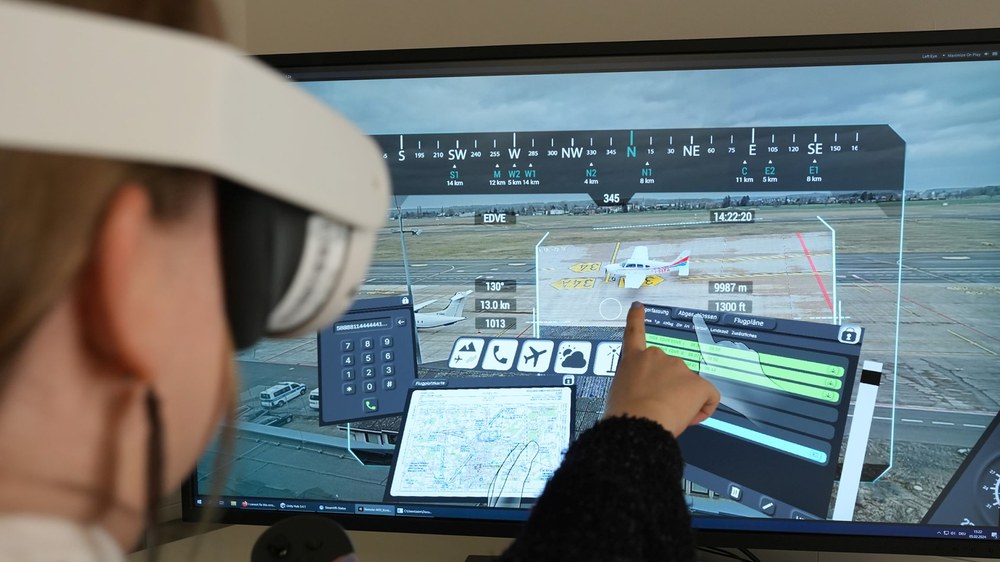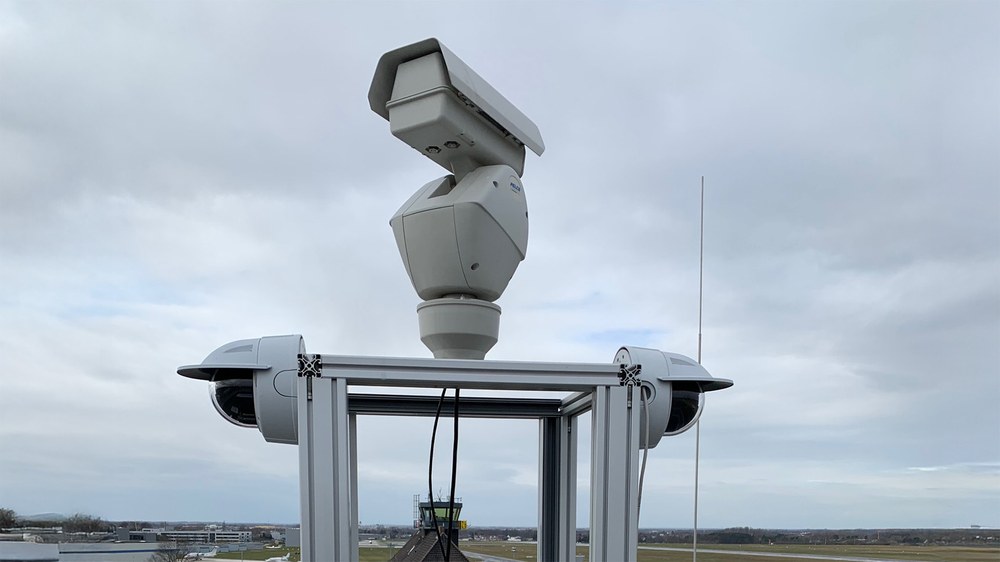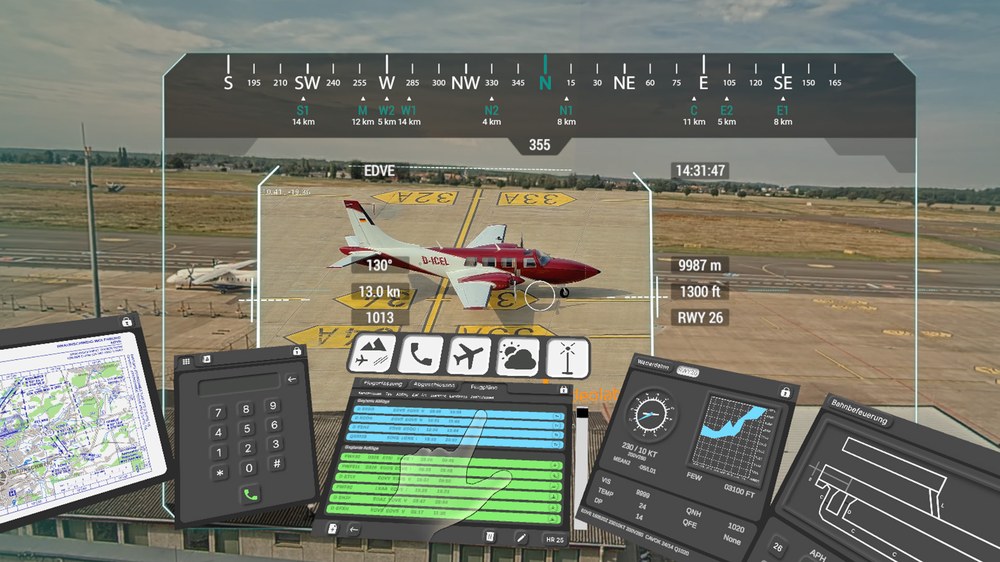Virtual Tower

Remote towers are already in operation and more and more remote tower centres (RTCs) are becoming available worldwide. Air traffic controllers are no longer tied to the location of the airport for which they provide ATC services. Moreover, airports can now be grouped together in remote tower centres, creating even more synergies to increase flexibility, safety and the service level for airspace users.
Transforming conventional towers to Virtual Towers
Building on this, DLR researchers have asked themselves: What if the entire Controller Work Position (CWP), including the view out of the window and all other necessary workstation systems and interactions, were deployed in a virtual environment?
DLR researchers are now working on a Virtual Tower concept, which provides a remote tower CWP wirelessly, anywhere, using standard and affordable virtual reality glasses. With such a system, controllers are not tied to a physical tower anymore. Wherever they have internet access, in a RTC, at home, across borders, around the world, the controller or aerodrome flight information service officer (AFISO) could provide air traffic services wherever and whenever needed.

Advantages for smaller airports and flight operations
Such a Virtual Tower setup can offer controllers many advantages in their daily operations especially at smaller airports:
- Utilise time zone advantages: During the day at Geneva airport the controller can take over the night traffic from Melbourne airport to avoid unpleasant night shifts in Melbourne and vice versa 12 hours later in order to avoid unpleasant night shifts for Geneva.
- Night shifts from home: A controller can control the only night flight at his airport from home and does not have to drive to the ATC tower in the middle of the night.
- Flexibility in an emergency: In an emergency, a controller can ask another controller for help, who will connect virtually.
- Customised ATC service: At airports with aerodrome flight information services, higher ATC services could be provided when needed by just calling a free controller colleague, who can take over the flight in question.
- Extended opening hours: Aerodrome flight information service officers can also share their shifts with other officers at low-density airports to extend the opening hours of these airports during off-peak periods.
Low hardware and infrastructure requirements
Airport operators no longer have to worry about maintaining a tower building or even CWP hardware, because there is no longer any CWP hardware except for the glasses. This makes the user interface easy to harmonise across all units. Interface adaptations or software updates can be installed on all the glasses at the same time and the controllers always have the same user interface, regardless of which airport they are at.
The hardware and infrastructure requirements are extremely low: The Virtual Tower concept consists of a basic video panorama using low-cost camera sensors, a standard state-of-the-art pan-tilt-zoom (PTZ) camera, a processing computer and a virtual reality environment (VR headset). The VR headset is used to display the video panorama and PTZ streams, to control the PTZ camera via a head tracking function and to provide radio communication, airport ambient sound and all necessary human-machine interactions, such as: electronic flight processing system, weather, communication or light panel systems. And all of this with very low hardware costs (less than 15,000 euros) and very low bandwidth requirements, which can even be transmitted using mobile phone networks.
The Virtual Tower concept can improve service levels at small and regional airports, increase revenues and make these airports more sustainable and financially self-sufficient.

The invention of Remote Tower at DLR
The Virtual Tower concept is based on the Remote Tower idea first formulated by DLR in 2002 during a brainstorming session on blue sky technologies. The idea received an innovation award and in 2005, the world’s first remote-tower prototype was employed by DLR at Braunschweig-Wolfsburg Airport to test the concept’s technical and operational feasibility. Several national and international research and development activities followed and numerous ANSPs, such as the Swedish ANSP LFV and the German ANSP DFS, expressed their interest and collaborated with DLR. In 2014, DLR licensed the technology to the industry and in 2015, the first remote-tower installation went operational in Sweden, providing control of Örnsköldsvik airport from Sundsvall. In December 2018, the DFS went operational with Saarbrücken Airport, its first remotely controlled airport out of the Remote Tower Center in Leipzig.
DLR has played a major role in the development of Remote Tower since the original idea and the first prototype. Numerous research activities helped the aviation industry to realise the concept in an exceptionally short time period.
DLR drives the standardisation within EUROCAE working group 100 and was the project coordinator of the largest Remote Tower projects in SESAR 2020.
